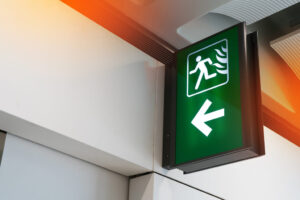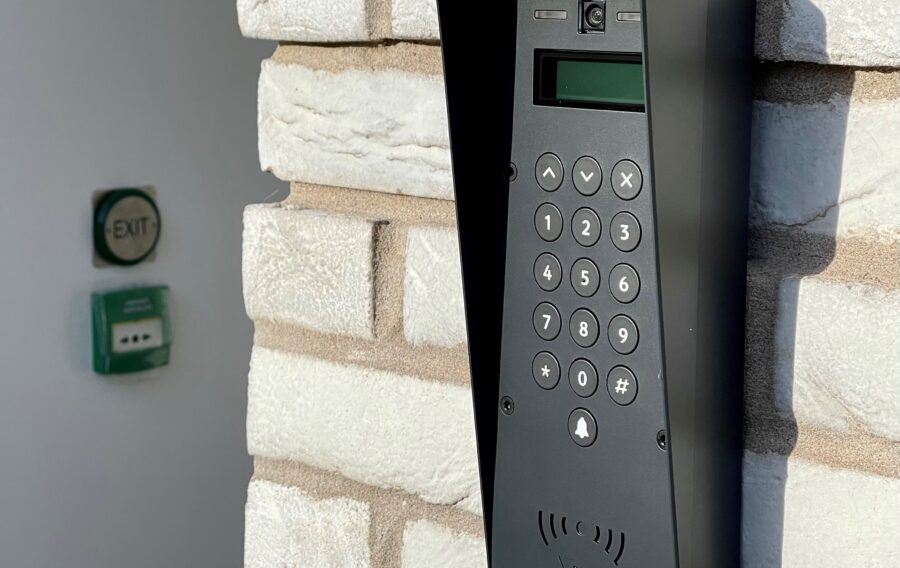The responsibilities of a property manager are varied and can differ from building to building dependent on the level of management employed. One vitally important aspect of this role can involve the fire safety measures of a premises.
The landlord, plus property managers (or letting agents), have legal duties to ensure proceedures and services are in place to protect a property from fire, as detailed in the Regulatory Reform (Fire Safety) Order 2005. The property manager’s role may include the direct involvement with the day-to-day maintenance and servicing of this safety equipment, or it could be delegated as necessary.
In a residential property, as a minimum, fire extinguishers, emergency lighting, fire alarms, fire doors and emergency evacuation plans should be present. Each service must abide to the British Standards as set out by law.
A fire risk assessment will identify risks and hazards, and make suggestions relating to the equipment required on-site. It’s advisable to use a third-party accredited company to ensure the highest levels of compliance are met.
Fire Extinguisher Maintenance
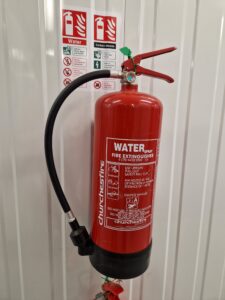 Fire extinguishers are arguably one of the most recognisable piece of fire safety equipment, allowing for the user to control small fires, if safe to do so.
Fire extinguishers are arguably one of the most recognisable piece of fire safety equipment, allowing for the user to control small fires, if safe to do so.
The Regulatory Reform (Fire Safety) Order 2005 instructs that all buildings must have extinguishers easily available and accessible at all times. A detailed fire risk assessment will state the number, and class, of extinguishers required in the property. The quantity will vary at each building, however a general rule is that a minimum of 2 ‘Class A’ extinguishers are required on each storey.
There are 5 main extinguisher types; Wet Chemical, Water, Dry Powder, CO2 and Foam with each used in certain scenarios, depending on the fire class and location of the extinguisher. Our experts at Churches Fire & Security can help determine what is required, alongside the information in the fire risk assessment.
Unfortunately, extinguishers are an easy target for accidental damage or vandalism. Therefore, we recommend weekly visual inspections of the extinguishers under the care of the property manager. The inspection should include checking for signs of leakage, damage and corrosion across the body of the extinguisher, and the hose, handle and pressure gauge.
Annual servicing is required to comply with British Standard 5306, which is provided as part of the Churches Fire & Security maintenance of extinguishers programme.
Emergency Lighting Checks
Used to illuminate escape routes, light up signage and other safety equipment in the event of a lighting failure, emergency lighting is a requirement in the common areas of a House of Multiple Occupany.
The system operates automatically if a lighting circuit loses power from the mains supply in an emergency situation. As such, it is subject to legal conformities under British Standard 5266-1.
Monthly testing of the emergency lighting system is recommended, to ensure correct operation if ever needed. To coincide with the monthly tests, a qualified fire safety technician should attend the property twice per year to complete a full service. This will include checking the battery power, expiration of the batteries, any circuitry issues, the general condition of the fitting and the bulbs and switches.
Fire Alarm Servicing
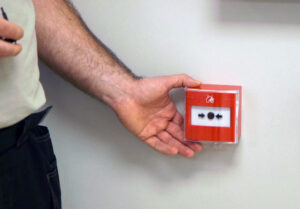 An essential part of any fire safety system, the Churches Fire & Security product offering includes the design, installation and maintenance of all types of fire alarm detection. In order to operate as required in the event of a fire, alarms must meet the British Standard 5839. The Standard dictates that the systen must be serviced every 6 months by a competent person.
An essential part of any fire safety system, the Churches Fire & Security product offering includes the design, installation and maintenance of all types of fire alarm detection. In order to operate as required in the event of a fire, alarms must meet the British Standard 5839. The Standard dictates that the systen must be serviced every 6 months by a competent person.
An alarm service by an expert Churches Fire & Security technician will include, but not be limited to:
- Alarm audibility testing
- The examination of batteries
- A full check of alarm panel functions
- Ensuring the wiring is secure and undamaged
- Carrying out function tests of initiation devices
Visual Fire Door Inspection
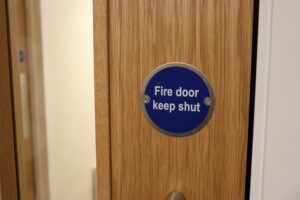 Used to stop the spread of fire, contain smoke and protect evacuation routes, fire doors can allow for the safe evacuation of a premises, as they are specifically built to withstand fire for up to 30 minutes. Fire doors are a legal requirement, under the Regulatory Reform (Fire Safety) Order, in apartments and flats that open into communal areas of the building (such as corridors).
Used to stop the spread of fire, contain smoke and protect evacuation routes, fire doors can allow for the safe evacuation of a premises, as they are specifically built to withstand fire for up to 30 minutes. Fire doors are a legal requirement, under the Regulatory Reform (Fire Safety) Order, in apartments and flats that open into communal areas of the building (such as corridors).
British Standard 9999 details that an inspection should take place every 6 months to ensure structural integrity and functionality of the doors. Our technicians can visually inspect fire doors and provide recommendations for suggested remedial works.
It is recommended that the property manager makes sure that any damage or defects on the door or leaf are remedied promptly. These examinations should include, but not be limited to, checking that the handles operate correctly, that any glass is secure in the door, that no door is left propped open and that all hinges are in place securely.
Emergency Evacuation Plan
The property manager should create an emergency evacuation plan for tenants and visitors, and ensure they are delivered in an understandable format.
A comprehensive plan is required, and a drill scenario should be carried out periodically to make sure everyone knows how to safely evacuate. It’s a good idea to take notes from the drills, to highlight any areas where further safety precautions are needed.
Evacuation alert systems are recommended by the British Standards for all new buildings containing flats with a storey located at 18m or more. More on these systems can be found on the Churches Fire & Security website, or by speaking to one of our team.
Property management is a great responsibility, with legal requirements that must be met.
To discuss your building, and any fire safety services, contact Churches Fire & Security today.
Get in touch



